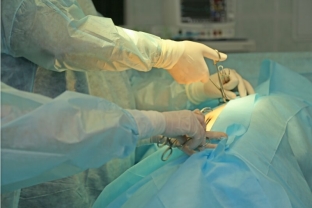Nephroptosis is a fairly common and dangerous disease of the urinary system. With this pathology, as a result of infection or injury, a violation of the normal state of the ligamentous apparatus of the kidney occurs, resulting in its displacement. The omission of the kidney, that is, a change in its physiological localization, creates a favorable background for the development of certain pathological processes, as a result of which complications of the pathology develop. The disease is dangerous because for quite a long time it can be practically asymptomatic, and the first signs appear only when the kidney function is significantly impaired. Treatment of nephroptosis can be conservative and surgical. When an operation is necessary - read on estet-portal.com.
Modern surgical methods for the treatment of nephroptosis
During nephroptosis, three stages are distinguished, in accordance with the degree of displacement of the organ. At the first stage, the prolapse of the kidney is observed only in the vertical position of the body, but when a person lies, the organ returns to its usual place. At this stage, conservative methods of treatment, such as wearing a bandage and performing special physical exercises, may be sufficient to eliminate the pathology and prevent the development of its complications. In the case of the transition of the disease to more severe stages, it is often impossible to do without surgery. To date, there are several main surgical methods for the treatment of nephroptosis.
Nephroptosis treatment:
- indications and contraindications for surgical treatment of nephroptosis;
- main methods of surgical treatment of nephroptosis;
- Laparoscopic nephropexy: a modern treatment for nephroptosis.
Indications and contraindications for surgical treatment of nephroptosis
Surgical intervention is always a certain risk, which is why there are strict indications for surgical treatment of nephroptosis, which include:
- the occurrence of intense pain, in connection with which the patient loses his ability to work;
- development of pyelonephritis, which is not eliminated by conservative therapy;
- occurrence of arterial hypertension;
- renal venous hypertension with gross hematuria;
- nephrolithiasis;
- hydronephrosis.
Contraindications to surgical treatment of nephroptosis include the elderly age of patients, severe intercurrent pathologies, general splanchnoptosis, as well as the presence of an unreasonably high risk of surgical intervention.
The main methods of surgical treatment of nephroptosis
Today, there are many different methods of surgical treatment of nephroptosis, which can be divided into several main groups:
- fixation of the kidney in the normal position due to sutures that are inserted into the parenchyma or fibrous capsule of the organ;
- fixation of the organ by the fibrous capsule without stitching it or with the help of flaps, provided that the kidney is partially decapsulated;
- Fixation of the kidney with perinephric tissue or muscles, which are extrarenal tissues, without suturing or with suturing of the fibrous capsule of the kidney.

Laparoscopic nephropexy: a modern method for the treatment of nephroptosis.
The most effective, safe and common method of surgical treatment of nephroptosis today is laparoscopic nephropexy. This surgical intervention involves the use of special laparoscopic equipment, which allows, with minimal damage to healthy body tissues, to return the kidney to a physiological position. To fix the organ and eliminate its rotation, today it is customary to use a polypropylene mesh. This technique of surgical intervention makes it possible to effectively treat the disease with minimal risk to the patient, as well as quickly return him to his usual way of life.






Add a comment